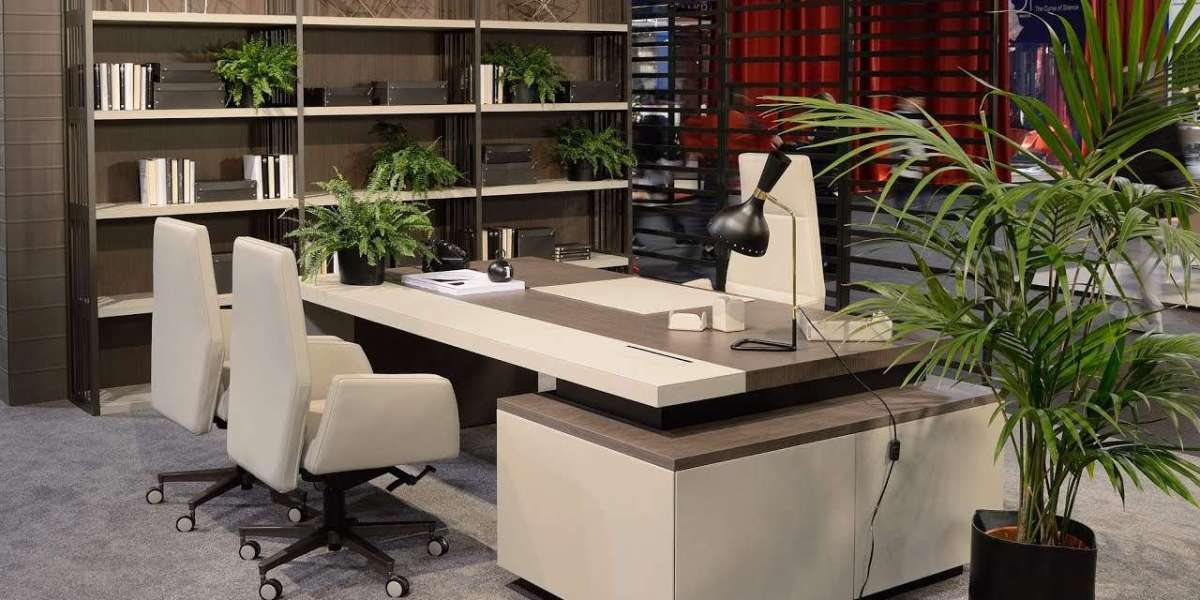As companies grapple with sustainability mandates and budget constraints, recycled furniture has emerged as a compelling solution that promises to address both concerns simultaneously. Yet the question remains whether this environmentally friendly approach delivers the functionality, aesthetics, and long-term value that modern offices demand.
The conversation around recycled office furniture has evolved far beyond simple cost-cutting measures. Today's recycled furniture market encompasses sophisticated refurbishment processes, innovative design solutions, and quality standards that rival new manufacturing. This transformation reflects a broader shift in how businesses approach resource consumption and waste management in their operational strategies.
What makes recycled furniture particularly intriguing for office environments is its potential to solve multiple challenges at once. Companies facing pressure to reduce their environmental footprint while managing tight budgets find recycled furniture an attractive proposition. However, the decision involves more complexity than simply choosing between new and used options, requiring careful consideration of quality, longevity, and overall value proposition.
The stigma once associated with recycled furniture has largely disappeared as refurbishment techniques have advanced and design sensibilities have evolved. Modern recycled furniture often appears indistinguishable from new pieces, incorporating contemporary aesthetics and functionality while maintaining the environmental benefits that make it appealing to sustainability-conscious organizations.
Understanding whether recycled furniture makes sense for your office requires examining multiple factors beyond initial cost savings. The decision impacts everything from employee satisfaction and productivity to long-term maintenance costs and corporate image. This complexity demands a thorough analysis of what recycled furniture can and cannot deliver in professional environments.
Breaking Down the Cost Reality Beyond Sticker Prices
The financial appeal of recycled furniture extends far beyond the obvious advantage of lower purchase prices. While recycled pieces typically cost 30-70% less than their new counterparts, the true economic impact involves a more complex calculation that includes factors such as durability, maintenance requirements, and replacement cycles that many organizations overlook in their initial assessments.
Hidden costs associated with recycled furniture can significantly impact the total cost of ownership. Delivery charges may be higher due to the fragmented nature of recycled furniture suppliers, who often operate smaller distribution networks than major manufacturers. Additionally, the time investment required to source specific pieces that match your office aesthetic and functional requirements can translate into substantial labor costs that aren't immediately apparent.
The refurbishment process itself varies dramatically in quality and comprehensiveness, affecting both the immediate usability and long-term durability of recycled pieces. High-quality refurbishment involves complete disassembly, replacement of worn components, and professional refinishing that can restore furniture to like-new condition. However, lower-quality refurbishment might involve only surface cleaning and minor repairs that fail to address underlying structural issues.
Warranty considerations present another layer of financial complexity. New furniture typically comes with comprehensive warranties that cover defects, mechanical failures, and sometimes even normal wear for extended periods. Recycled furniture warranties are often limited or nonexistent, potentially leaving organizations responsible for repair or replacement costs that would otherwise be covered by manufacturer guarantees.
The resale value of recycled furniture also differs significantly from new pieces. While new office furniture depreciates rapidly in its first few years, recycled furniture has already absorbed much of this depreciation. This means that recycled pieces may retain their value better over time, potentially offering better return on investment when office renovations or relocations necessitate furniture changes.
Quality Assessment in the Circular Economy
Evaluating the quality of recycled furniture requires different skills and considerations than assessing new pieces. The visible condition of recycled furniture provides only partial information about its true quality and remaining useful life. Professional assessment involves examining structural integrity, mechanical components, and material condition that may not be immediately apparent to casual observers.
Structural soundness becomes the primary concern when evaluating recycled furniture, particularly for pieces that will see heavy daily use in office environments. Joints, fasteners, and support structures may show wear that compromises stability and safety. Professional refurbishers address these issues systematically, but lower-quality recycling operations might focus primarily on cosmetic improvements while neglecting structural concerns.
The mechanical components of office furniture, such as drawer slides, casters, and adjustment mechanisms, represent critical quality factors that directly impact user experience and long-term functionality. These components typically show wear more quickly than structural elements and may require replacement to restore full functionality. Quality recycled furniture suppliers invest in replacing these components as part of their refurbishment process.
Material quality varies significantly among recycled furniture pieces, reflecting the original manufacturing standards and the care taken during previous use. High-quality original furniture often maintains its structural integrity and appearance better than lower-grade pieces, making it more suitable for professional refurbishment and continued office use.
Surface condition assessment requires understanding the difference between cosmetic wear that can be addressed through refinishing and deeper damage that might compromise functionality or appearance. Professional refurbishers can restore most surface damage, but some types of wear, particularly to laminate surfaces or specialized finishes, may be difficult or impossible to repair completely.
Educational Sector Innovations Driving Change
The educational sector has pioneered many of the innovations and quality standards that now benefit the broader recycled furniture market. Classroom furniture design has always emphasized durability, safety, and adaptability due to the intensive use patterns and diverse user needs found in educational environments, and these same principles have informed the development of high-quality recycled furniture solutions for office applications.
Educational institutions have long been leaders in furniture recycling and refurbishment, driven by budget constraints and the need to maintain functional learning environments while managing limited resources. The processes developed for refurbishing school furniture have established quality standards and techniques that benefit all sectors of the recycled furniture market.
The modular design principles common in educational furniture have influenced office furniture design and refurbishment practices. Modular components can be easily separated, refurbished individually, and recombined in new configurations, making them ideal candidates for recycling programs. This modularity also allows for partial replacement of worn components while retaining functional elements.
Safety standards developed for educational environments often exceed those required for typical office use, meaning that recycled furniture originally designed for schools may offer higher safety margins than necessary for office applications. This over-engineering can actually benefit office users by providing additional durability and reliability.
The collaborative furniture concepts pioneered in educational settings have found new applications in modern office environments, where teamwork and flexible work arrangements are increasingly important. Recycled educational furniture can often be adapted for office use with minimal modification, providing unique solutions that support contemporary work styles.
Environmental Impact Beyond the Marketing Claims
The environmental benefits of recycled furniture extend far beyond the obvious advantage of diverting materials from landfills. The complete environmental impact involves complex calculations that include manufacturing energy savings, transportation considerations, and the extended lifecycle benefits that recycled furniture can provide when properly managed.
Manufacturing energy savings represent one of the most significant environmental benefits of recycled furniture. The energy required to refurbish existing furniture is typically 70-85% less than manufacturing new pieces from raw materials. This energy savings translates directly into reduced carbon emissions and lower environmental impact, making recycled furniture an effective tool for organizations seeking to reduce their environmental footprint.
Transportation considerations present a more complex environmental calculation. While recycled furniture reduces manufacturing transportation, the distribution networks for recycled pieces are often less efficient than those for new furniture. Local sourcing of recycled furniture can minimize transportation impact, but organizations requiring specific pieces may need to source from distant suppliers, potentially offsetting some environmental benefits.
The lifecycle extension achieved through recycling represents a fundamental shift from the linear consumption model that dominates traditional furniture purchasing. Instead of the typical pattern of manufacture, use, and disposal, recycled furniture follows a circular model where materials continue to provide value through multiple use cycles.
Material recovery and processing techniques have advanced significantly, allowing for more complete utilization of recycled furniture components. Advanced disassembly techniques can separate different materials for specialized recycling, ensuring that even components that cannot be reused directly can be processed into new products.
The ripple effects of choosing recycled furniture extend beyond the immediate environmental impact to influence supplier practices, market demand, and industry standards. Organizations that demonstrate demand for recycled furniture encourage the development of more sophisticated recycling operations and higher quality standards throughout the industry.
Aesthetic Considerations in Professional Settings
The visual impact of recycled furniture in professional environments has become increasingly important as organizations recognize the role that physical environment plays in employee satisfaction, client impressions, and corporate image. Modern recycled furniture can achieve aesthetic standards that rival new pieces, but achieving cohesive, professional appearances requires careful selection and planning.
Design cohesion presents unique challenges when furnishing offices with recycled pieces. Unlike new furniture collections that offer coordinated aesthetics across different piece types, recycled furniture typically comes from various manufacturers and design eras. Creating visually cohesive environments requires either finding pieces from the same original collection or carefully selecting pieces that complement each other despite their different origins.
The patina and character that comes with recycled furniture can actually enhance office aesthetics by providing visual interest and uniqueness that new furniture often lacks. Well-maintained recycled pieces often develop distinctive character that new furniture cannot replicate, creating environments that feel more lived-in and comfortable than sterile new installations.
Color and finish flexibility represents both an opportunity and a challenge with recycled furniture. Many recycled pieces can be refinished in new colors or finishes to match specific design requirements, providing customization options that might be expensive or unavailable with new furniture. However, some materials and finishes cannot be altered, limiting design flexibility.
The mixing of recycled and new furniture has become an accepted design approach that can provide the best of both worlds. Strategic placement of recycled pieces alongside new items can create interesting visual contrasts while maintaining professional aesthetics. This approach also allows organizations to address specific functional needs with new pieces while using recycled furniture for less critical applications.
Sourcing Strategies That Actually Work
Successfully sourcing recycled furniture for office environments requires different approaches and relationships than traditional furniture procurement. The fragmented nature of the recycled furniture market means that organizations must often work with multiple suppliers and employ various sourcing strategies to meet their complete furnishing needs.
Timing considerations play crucial roles in recycled furniture sourcing. Unlike new furniture that can be ordered with predictable delivery schedules, recycled pieces become available based on when organizations dispose of their existing furniture. This unpredictability requires flexible planning and sometimes accepting pieces that are available rather than waiting for ideal options.
Quality verification processes become essential when sourcing recycled furniture from multiple suppliers with varying standards and practices. Developing relationships with reputable refurbishers who provide consistent quality and reliable service can significantly reduce the risks associated with recycled furniture procurement.
Inventory management strategies must account for the unique characteristics of recycled furniture availability. Organizations may need to purchase and store pieces when they become available rather than waiting until they are needed, requiring storage space and inventory management capabilities that aren't necessary with new furniture procurement.
The due diligence required for recycled furniture sourcing extends beyond quality assessment to include verification of legal ownership, environmental compliance, and supplier reliability. Working with established recycling operations that maintain proper documentation and follow industry standards reduces legal and operational risks.
Maintenance and Longevity Realities
The long-term performance of recycled furniture depends heavily on the quality of the original pieces, the thoroughness of the refurbishment process, and the ongoing maintenance they receive. Understanding these factors is crucial for organizations considering recycled furniture as a long-term office solution.
Maintenance requirements for recycled furniture may differ from those of new pieces, reflecting both the materials and construction methods used in older furniture designs. Some recycled pieces may require more frequent attention to maintain their appearance and functionality, while others may actually be more durable than contemporary alternatives due to superior original construction.
Replacement part availability can present challenges for recycled furniture, particularly for pieces from discontinued product lines or manufacturers that are no longer in business. Organizations should consider the availability of replacement parts when selecting recycled pieces, especially for furniture with complex mechanical components.
The aging characteristics of different materials affect how recycled furniture performs over time. Some materials age gracefully and develop appealing patina, while others may show wear more prominently. Understanding these characteristics helps organizations make informed decisions about which recycled pieces are likely to maintain their appearance and functionality over extended periods.
Professional maintenance services for recycled furniture have developed in response to the growing market, offering specialized care that addresses the unique needs of refurbished pieces. These services can extend the useful life of recycled furniture significantly, making it a more viable long-term option for office environments.
Integration with Modern Office Technology
The compatibility of recycled furniture with contemporary office technology presents both opportunities and challenges that organizations must carefully consider. While some recycled pieces adapt easily to modern technology requirements, others may require modification or may be unsuitable for technology-intensive applications.
Cable management solutions for recycled furniture often require creative approaches since older pieces weren't designed with extensive technology integration in mind. However, aftermarket solutions can often address these needs effectively, and some recycled pieces actually offer better cable management options than their contemporary counterparts.
Power and data connectivity requirements have evolved significantly since many recycled furniture pieces were originally manufactured. While this can create integration challenges, it also provides opportunities to upgrade pieces with modern connectivity solutions that enhance their functionality beyond original specifications.
The ergonomic standards incorporated into recycled furniture may differ from current recommendations, potentially affecting their suitability for modern office use. However, many high-quality recycled pieces were built to ergonomic standards that remain relevant today, and some may actually exceed current minimum requirements.
Technology integration modifications can often be accomplished without compromising the structural integrity or aesthetic appeal of recycled pieces. Professional modification services can add modern functionality while preserving the character and environmental benefits that make recycled furniture attractive.
Conclusion
The question of whether recycled furniture is worth it for offices doesn't have a simple answer, as the value proposition depends on multiple factors that vary significantly among organizations and specific situations. The environmental benefits are clear and measurable, making recycled furniture an attractive option for organizations committed to sustainability goals. However, the practical considerations of quality, aesthetics, sourcing, and long-term maintenance require careful evaluation.
The financial advantages of recycled furniture extend beyond initial cost savings to include potential resale value retention and reduced environmental compliance costs. However, these benefits must be weighed against potentially higher maintenance requirements, limited warranty coverage, and the time investment required for sourcing and quality verification.
The aesthetic possibilities offered by recycled furniture have expanded significantly as refurbishment techniques have advanced and design sensibilities have evolved. Organizations willing to invest in careful selection and professional refurbishment can achieve professional appearances that rival new furniture while maintaining the environmental and financial benefits of recycling.
The key to success with recycled furniture lies in approaching it as a strategic decision rather than simply a cost-cutting measure. Organizations that develop clear quality standards, establish relationships with reliable suppliers, and plan for the unique requirements of recycled furniture procurement are most likely to achieve satisfactory results.
Looking forward, the recycled furniture market will likely continue evolving toward higher quality standards and more sophisticated refurbishment processes. As environmental concerns become increasingly important in corporate decision-making, recycled furniture represents a practical way for organizations to demonstrate their commitment to sustainability while potentially achieving cost savings and unique aesthetic outcomes.
The decision to use recycled furniture ultimately depends on an organization's priorities, resources, and willingness to invest in the additional planning and management that recycled furniture often requires. For organizations that approach it thoughtfully, recycled furniture can provide excellent value while supporting broader environmental and social responsibility goals.







